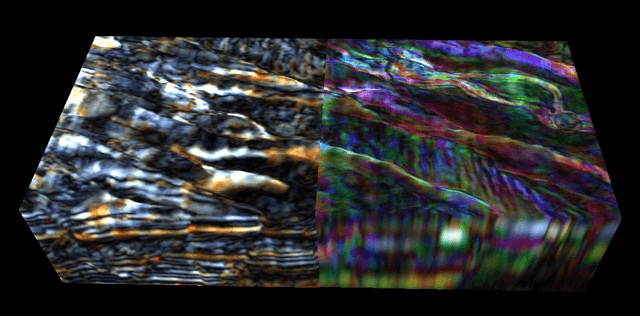HDFD utilises an algorithm that enables high definition frequency decomposition, essentially retaining the resolution of your original seismic.
It does this by determining an analytic wavelet representation of the seismic trace and minimizing loss of the resolution in the time domain.
Time domain resolution is gained at the expense of frequency domain resolution, as all time-frequency transforms must trade off frequency and temporal resolution.
However, the HDFD adaptively manages the resolution trade off in a way that preserves the scale characteristics of the seismic trace at every point, avoiding the “windowing effects” that are inherent in other approaches to frequency decomposition, such as Continuous Wavelet Transform, CWT.
In contrast, standard FD is not adaptive but instead uses specific Gabor Wavelets to pinpoint frequencies of interest with a great deal of flexibility. i.e. it produces a small part of that analytic wavelet representation within the HDFD.
As a result applying standard FD can reduce resolution as with other direct wavelet based techniques such as CWT.


